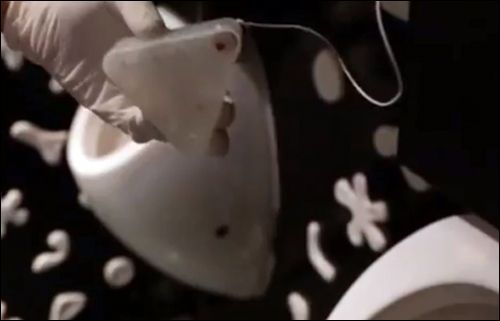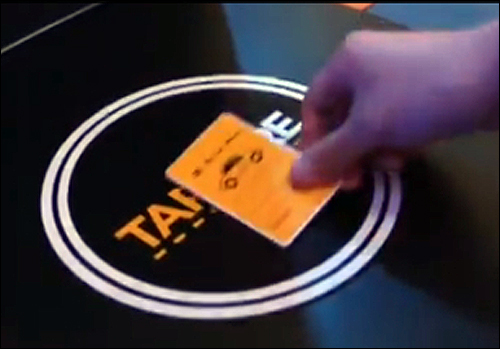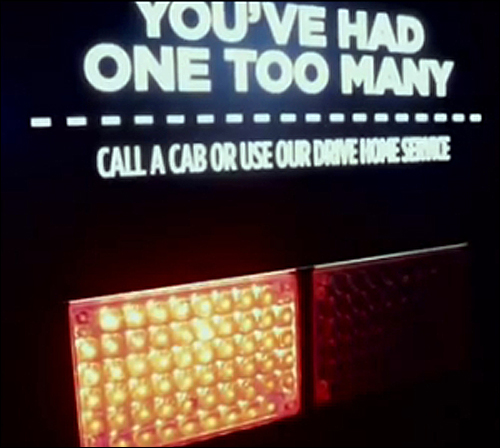A radio frequency identification system tested for two weeks in April 2013 at Singapore night club Zouk may have prevented alcohol-related traffic accidents, by warning parking attendants not to hand over car keys to inebriated patrons.
The solution, known as the Pee Analyser, was developed by DDB Group Singapore, an advertising and marketing agency, at Zouk’s request. With the trial now concluded, DDB Group Singapore is now seeking other venues in which to further test the technology, in an effort to expand the solution’s use nationwide.

The technology was designed to make it easy to ascertain an inebriated individual’s blood-alcohol level before he begins driving. The trial’s focus was only on men, the company reports, since they account for 90 percent of drunk-driving arrests in Singapore.
“As Asia’s premier clubbing destination, Zouk has always understood the mindset of partygoers and put this knowledge to better use,” says Sofie Chandra, Zouk’s head of business development. “Almost every drunk driver thinks he is sober enough to drive, so we decided to catch drunk drivers even before they started driving.”
At Zouk Singapore, two urinals were equipped with devices that measure the blood-alcohol content of an individual’s urine. A ThingMagic Astra ultrahigh-frequency (UHF) RFID reader was installed near the urinal.
During the pilot, as a male patron arrived at the club, he was provided with a valet ticket containing an embedded passive UHF RFID transponder. As that customer used the urinal throughout the evening, the sensors in the toilet determined the amount of alcohol in his urine. If that number exceeded the legal limit, the sensor transmitted a prompt via a wired connection to a computer, also wired to the ThingMagic reader—which, in turn, wrote that information to the patron’s ticket. The sensor then instantly reset, thereby allowing consecutive readings.
For those possibly unfit to drive, the system displayed an alert on a video monitor above the urinal, stating: “You may have had one too many to drive. Call a cab, or use our drive home service.”

An additional interrogator was mounted at the parking area in front of the nightclub. This device read every male patron’s card, and a screen displayed any warnings of high blood-alcohol levels, enabling the valet staff to determine whether or not to turn over each individual’s car keys.
DDB Group Singapore provides its clients with digital-engagement, data-mining and content-development services. The strategy behind the Pee Analyser solution, the agency explains, is to catch drunk drivers by surprise, before they begin driving. “DDB and Zouk had been in close communication for several months” in an effort to develop a solution, says Joji Jacob, DDB Group Singapore’s group executive creative director. “We also understood that Zouk was an advocate for anti-drunk driving, and was keen to take a pro-active step to addressing the problem.”
Zouk already offered a drive-home service for patrons who were visibly intoxicated, or who requested such assistance, Jacob says. “Pee Analyser was created in collaboration with Zouk to take this cause a step further,” he states.
Prior to the system’s installation, Zouk provided paper parking cards to customers as they left their vehicles with the valet service before entering the club. The patrons then kept the card in a pocket or wallet, turning it in upon picking up their car keys at the end of the evening, after which valets would return their keys to them.
The unique ID number encoded to the tag is not linked to any data about the individual himself, the company notes. However, it does create a link to the keys of the vehicle that has been turned over, which is then entered into the club’s software.

At the valet station, a driver handed his RFID parking card to a member of the valet staff, who placed it on a reader installed under the kiosk’s counter. The reader captured the tag’s ID number, along with any urine test results. If the measured alcohol level was deemed acceptable, a green light was displayed, and that driver was handed his keys. If the measurement was too high, however, a red light on the kiosk was illuminated and that patron was offered a ride from the drive-home service, or the club called a cab to pick him up. The card was then cleared for use by the next customer.
The system was not intended to be a police-enforcement system, the company assures. If an individual demanded his keys despite a high blood-alcohol level, the club returned them as request. However, over the course of the two-week pilot, the system tested 573 drivers, 342 of whom opted for the drive-home service or elected to call a cab.
“We conducted the pilot project across two weeks, so that we could monitor the usability and effectiveness within the given timeframe,” Jacobs says. “We’ve captured feedback and findings, as well as gained valuable insight to better address the problem. With this, we are able to further tweak the pilot and improve clearer outcomes for future implementations.”

